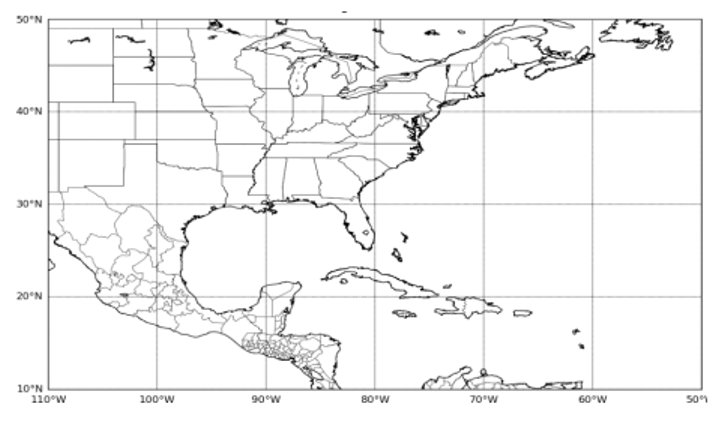Mesoscale conditions associated with rain in the morning during the rainy period at the meteorological stations of Havana
Main Article Content
Abstract
This research aims to identify the mesoscale conditions associated with rain in the morning during the rainy season in the meteorological stations of Havana, with a synoptic and mesoscale study. To do this, a three-hour rainfall database is prepared in the morning hours at the meteorological stations of Casablanca and Santiago de las Vegas, corresponding to the 2000-2017 study period. A total of six synoptic configurations associated with the rain in the morning were determined in each meteorological station, which were shaped according to their location on the surface, the structure they presented in the height and their influence on the study area. The anticyclonic influence on surface constitutes the synoptic situation that more days with rain in the morning had associated in each meteorological station. In addition, four conditions that are associated with rainfall in the mesoscale were determined by means of satellite images and meteorological radar observations, in cases with anticyclonic influence in the whole tropospheric column. The low levels of the troposphere were the ones that contributed most moisture and the vertical movements did not influence significantly in such cases. The years 2005 and 2007 were the ones with the highest amount of rainy days in the morning in Santiago de las Vegas and Casablanca, respectively, and October was the month with the most reports of rain in the morning.
Downloads
Article Details

This work is licensed under a Creative Commons Attribution-NonCommercial 4.0 International License.
Those authors who have publications with this journal accept the following terms of the License Attribution-NonCommercial 4.0 International (CC BY-NC 4.0):
You are free to:
- Share — copy and redistribute the material in any medium or format
- Adapt — remix, transform, and build upon the material
The licensor cannot revoke these freedoms as long as you follow the license terms.
Under the following terms:
- Attribution — You must give appropriate credit, provide a link to the license, and indicate if changes were made. You may do so in any reasonable manner, but not in any way that suggests the licensor endorses you or your use.
- NonCommercial — You may not use the material for commercial purposes.
- No additional restrictions — You may not apply legal terms or technological measures that legally restrict others from doing anything the license permits.
The journal is not responsible for the opinions and concepts expressed in the works, they are the sole responsibility of the authors. The Editor, with the assistance of the Editorial Committee, reserves the right to suggest or request advisable or necessary modifications. They are accepted to publish original scientific papers, research results of interest that have not been published or sent to another journal for the same purpose.
The mention of trademarks of equipment, instruments or specific materials is for identification purposes, and there is no promotional commitment in relation to them, neither by the authors nor by the publisher.
References
INSMET. 2012. Manual de Procedimientos Operacionales Ordinarios del Sistema Nacional de Pronósticos. Instituto de Meteorología INSMET. La Habana, Cuba.
Irañeta, J. M. 2016. Estudio a mesoescala de la lluvia localmente intensa en la mitad occidental de Cuba para el periodo poco lluvioso. Tesis presentada en opción al grado de Licenciado en Meteorología, Instituto Superior de Tecnologías y Ciencias Aplicadas, La Habana, Cuba.
Lecha et al. 1994. El clima de Cuba. Editorial Academia, La Habana, Cuba.
ONEI (Oficina Nacional de Estadísticas e Información). 2010. Available:
Orbe, G. 2009. Sistema de reconocimiento de patrones de eventos de lluvias intensas en la mitad occidental de Cuba. Tesis presentada en opción al grado de Doctor en Ciencias Meteorológicas, La Habana, Cuba.
Somoza, N. 2020. “Condiciones sinópticas que favorecen las precipitaciones durante la mañana en el período lluvioso en La Habana”. Revista Cubana de Meteorología, 26(1): 1-15, ISSN: 2664-0880.

